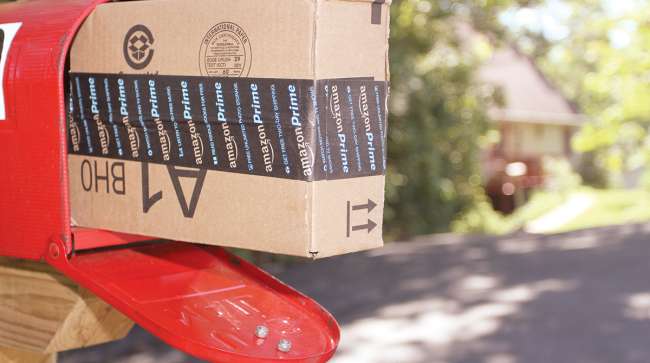Staff Reporter
Amazon Jumps Into Freight Brokerage

Amazon.com has jumped into the market of the third-party logistics broker, roiling the waters and raising concern that the Seattle-based e-commerce giant could disrupt the freight industry forever and indelibly.
Amazon’s new freight-hauling site — located at freight.Amazon.com — has been up and running since August 2018, but it went largely unnoticed by media until early May, when The Wall Street Journal and others reported on Amazon’s entry into the market. Reports noted Amazon was offering “beta service” full truckload hauling in dry vans. The service is available for pickups in Connecticut, Maryland, New Jersey, New York and Pennsylvania.
Amazon has been brokering freight since 2016, according to Amazon spokesperson Rena Lunak, and the freight site, which offers spot rates, finally went up last summer.
Lunak told Transport Topics that in the flurry of reporting earlier in May, some outlets compared Amazon’s spot rates with contractual rates, which she said was not “apples to apples.”
IS AMAZON A LOGISTICS COMPANY? Why it doesn't appear in our Top 50 rankings
Amazon officials bristled at the suggestion that the retail giant was using its might to muscle into freight markets and offer discounted rates to grab market share.
“We work with many linehaul service providers in our transportation network and have long utilized them to carry loads for Amazon,” Lunak said in an e-mail statement to TT. “This service, intended to better utilize our freight network, has been around in various forms for quite some time. The analysis suggesting dramatic undercutting of pricing is false.”
As for Amazon’s entry into brokerage, it likely is part of a plan to better execute delivery, say business observers. And by providing logistics, Amazon can lower its shipping costs, one top analyst said.
“It’s all about concentrating buying power,” Armstrong & Associates President Evan Armstrong told TT. “By offering services to shippers, they will increase their purchased transportation spend with providers and be able to garner more trucking capacity at better rates.”

Armstrong
To other analysts, it is part of Amazon’s modus operandi: It’s not personal with freight, it’s just another service Amazon learned along the way. And when Amazon learns something, it begins to sell it. It’s a play Amazon has executed before, said Jeremy Bowman, a writer and analyst with The Motley Fool.
“I think with logistics/freight, they’re following a similar playbook to what they did with Amazon Web Services, fulfillment and other businesses that have become highly profitable for them: Develop a new business/infrastructure to serve the needs of its own massive e-commerce business and from there, once it’s ironed out the kinks, begin selling to whoever’s interested,” Bowman said in an e-mail to TT.
The comparison of Amazon Freight with Amazon Web Services is made often. Amazon started AWS in 2002 to accommodate Amazon’s web business. Eventually, the cloud-computing service was offered outside of house, to other businesses. At the end of 2018, AWS made $25.7 billion in revenue, earning $7.3 billion in net income, according to Amazon’s 2018 financial filings. The company also boasted of new businesses AWS attracted in 2018, with Korean Air and Santander’s Openbank going “all in” with AWS for cloud-computing.
Thus, one analyst wrote it is not that surprising that Amazon now offers freight hauling.
“Twenty years in, Amazon’s modus operandi is clear,” Freightos CEO Zvi Schreiber wrote on his blog. “They build internal tools and then offer them as a service, just like Amazon warehouses were first used for their inventory and then opened up for fulfillment by Amazon [FBA] sellers, trucking will go the same way.”

Schreiber
Schreiber wrote that “[Amazon’s] snowball of success has relied on expanding from one market to the next, leveraging market dominance to penetrate new markets.”
Schreiber later told TT that with 60% of American households signed up for Amazon Prime memberships, “I think they have an unfair advantage that needs to be watched carefully.”
Amazon does things very well, and it wants to control the whole supply chain, from China to the ports to fulfillment centers to home delivery, Schreiber said. And to make money along the entire route, he added.
Bowman told TT that Amazon’s motives may be in-house before they are related to seeing market opportunity in freight, much like AWS. Bowman said past problems with insufficient capacity and speed during holidays likely has led Amazon to want to handle as much in-house freight and delivery as it can.

Bowman
“And it doesn’t hurt that logistics is a huge industry/opportunity,” Bowman said.
Amazon’s new final-mile standard of one-day delivery means every season is like Christmas, and that means Amazon has to examine its own logistics better.
“To me, with their recent announcement of one-day delivery for Prime members, the company very clearly envisions a huge ramping up in its own need and demand for delivery,” Bowman said. “In order to make sure that goes right, they want to handle as much of it as possible themselves and build that logistics business from there.”




